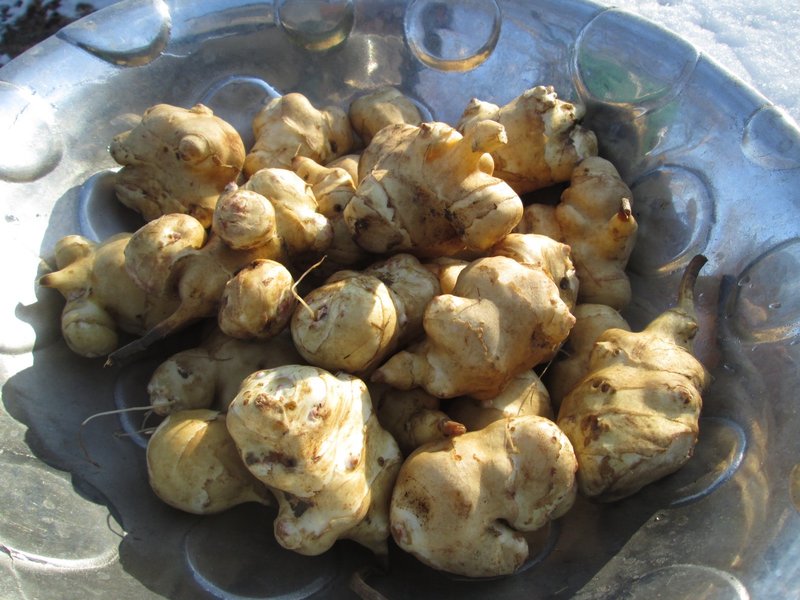Back to November 2015 Newsletter
Jerusalem artichokes at the Pollinator Fedge

Kim Fellows
A Pollinator Fedge is a living fence-hedge that provides habitat for native pollinating and other beneficial insects. Pollinator fedges increase the garden’s productivity without using chemicals. The plants we grew in our fedge are predominantly native perennials, with a few exceptions, and were carefully chosen to offer a continuous nutritious bloom of pollen and nectar, from early spring to late autumn.
| Plants at the Pollinator Fedge Red raspberry |
The Hope and Unity Community Garden is located in a vast suburban field of mowed grass, and offers 100 plots. The 740-foot perimeter of the garden is demarcated by an orange snow fence, and the fedge was created in a 4-foot wide swath around the periphery, thus occupying almost 3000 square feet.
We prepared the fedge area by rototilling in late April, and covering the soil with straw. Over the next three weeks we planted several native plants (see box).
You may wonder why Jerusalem artichoke is on that list. As Louise Riotte explains, Helianthus tuberosus is neither an artichoke, nor does it hail from Jerusalem. The most popular explanation of the plant’s name is that “Jerusalem” may have derived from the Italian word “girasole,” which means “turning to the sun.” Some claim that the tubers produced by this plant taste like artichokes when cooked. Once they are blooming, the flowers generously offer nectar and pollen to many different bees and other pollinating insects.
Helianthus tuberosus is a wild edible and a cousin of the sunflower, both being members of the Asteraceae family. They are prolific plants, and any tubers left in the soil will sprout the next year. This may explain why Seeds of Diversity’s executive director Bob Wildfong was happy to share tubers from his garden with our pollinator fedge!
Native North Americans called these tubers “sunroots,” and cultivated them before the arrival of Europeans. Sunroots can be used as a staple crop, taking the place of the potato. However, they differ in that they lack starch. Instead, they are predominantly composed of inulin, making them suitable for diabetic diets. Sunroots dry out quickly once harvested, but can be mulched and left in the ground for easy access. Members of Seeds of Diversity can pull out their issues of the Heritage Seed Program magazine from August 1989 and January 1999 to read more about this fascinating plant.
Watch out for future issues of this e-bulletin as we continue to share our progress on the Pollinator Fedge over the course of the season, and spotlight other species on our list of Fedge plants.
Kim Fellows is the outreach coordinator for Pollination Canada.
Pollination Canada gratefully acknowledges permission from The Salvation Army's Hope and Unity Community Garden and the cooperation of Garden Coordinators Jeremy Megit and Harriet Boyd. We are indebted to the Toronto Dominion Friends of the Environment for funding this phase of the Pollinator Fedge. We thank Herrle's Country Farm Market for delivering straw at a reduced rate, and we deeply appreciate our partnership with Wilfrid Laurier University's Community Service Learning program, which has provided us with volunteers.
Read more:
Riotte, Louise. 1990. Sleeping with a Sunflower. Storey Communications. 220 pp.
Photo: Sunroot tubers
Not yet a member?
An annual membership to Seeds of Diversity gives you access to our seed exchange, seed grow-out programs, and our online news.

We depend on donations to do our work.

Thank you for your support!
